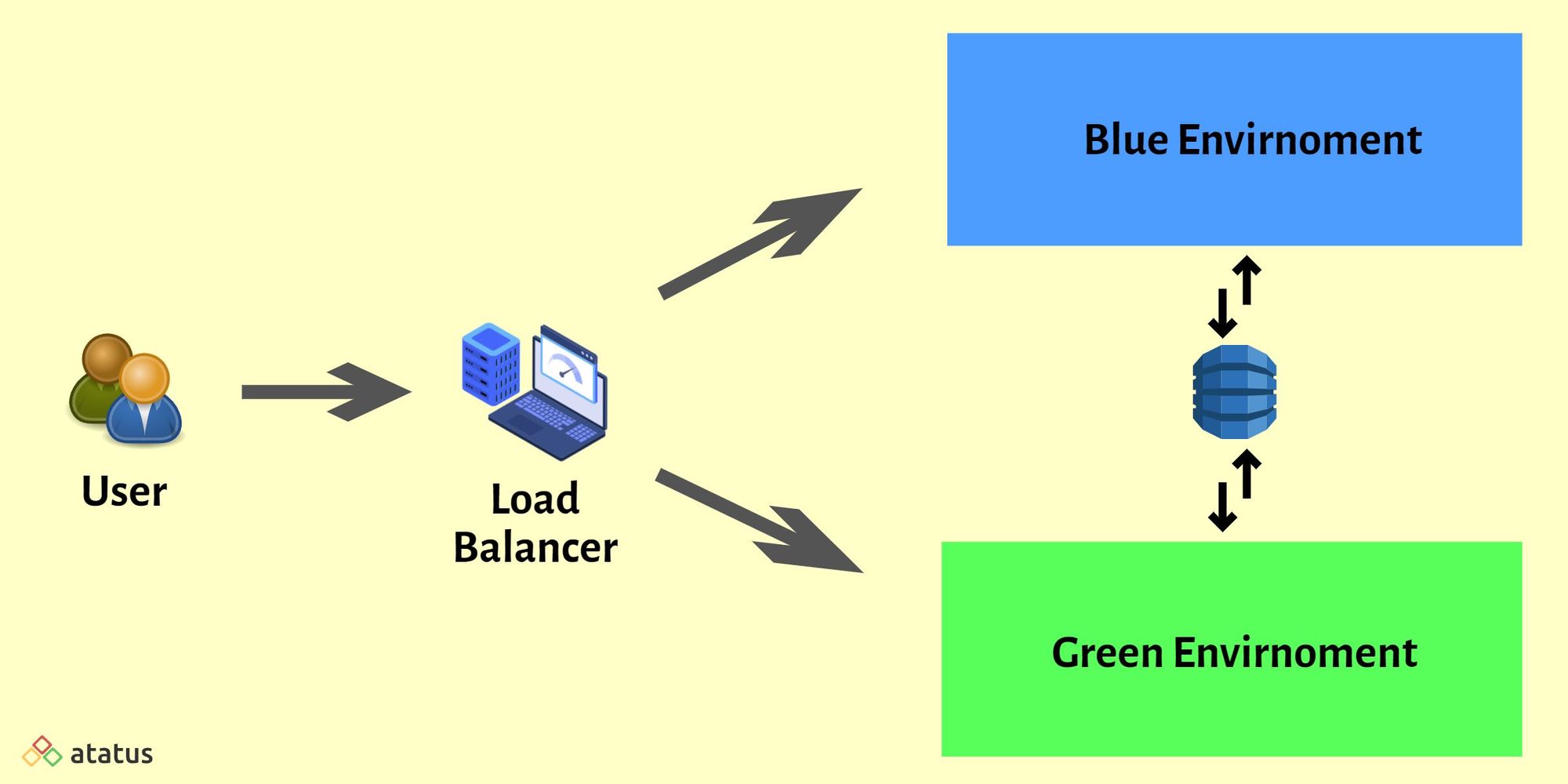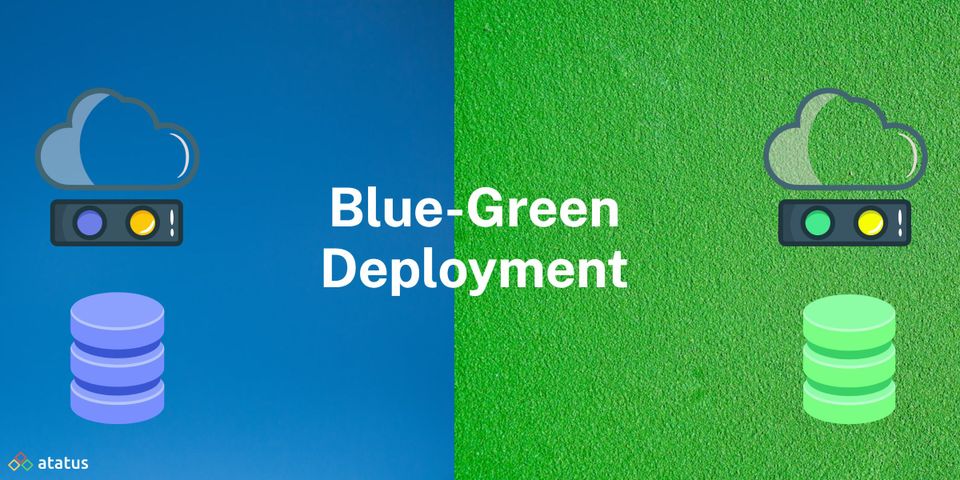In the present circumstances, there is a higher demand for continuous deployment in order to keep current with software changes and give a high-quality application experience to the user. Blue-Green Deployment is one of the various strategies available on the market for this.
We will go over the following:
- What is Blue-Green Deployment?
- How Does Blue-Green Deployment Work?
- Benefits of Blue-Green Deployment
- Challenges of Adapting a Blue-Green Deployment
What is Blue-Green Deployment?
A Blue-Green deployment method, also known as Red-Black Deployment in software delivery, is one in which the old and new instances of an application or microservice operate in parallel in production at the same time with a load balancer switching traffic from the older version to the newer one.
Let's assume that the blue environment is active and the green one is inactive. When a developer wishes to release a new code of any kind – a new feature, a new version of the application, etc. – they work on the new version in the green environment while maintaining the old version in the blue.
The load balancer switches all production traffic to the green version once the new release is complete, while the blue version is kept as a backup. The previous blue version is deleted, the currently-live version becomes the blue, and a new production environment clone is generated to become the new green after the green version has been live for a while and has been certified bug-free.
How Does Blue-Green Deployment Work?
With a few exceptions that we'll discuss later, blue-green ticks all of the boxes for a perfect deployment process:
Seamless: No downtime should be experienced by users.
Safe: Low risk of failure.
Fully Reversible: The modification can be undone with no negative consequences.
The blue-green approach is based on side-by-side deployments. We'll need two different but identical environments for this. And by the environment, I mean everything from servers, virtual machines, containers, configurations, databases to among other things. Different boxes might be used at times. We can also use distinct virtual machines running on the same hardware at other times. Alternatively, they could be different containers running on the same hardware.

The Blue-Green deployment procedure is divided into four stages.
Stage 1: Setting Up a Load Balancer to Help Users Find Their Way Around
We want people to be able to access the new green instance rather than the older blue instance so that we must have two instances named blue and green. Since DNS propagation is not immediate, we usually utilize a load balancer instead of a DNS record exchange to accomplish this.
Load balancers and routers help in the transition of users from the blue to the green instance. There is no need to modify DNS records because the load balancer will continue to use the same DNS record while routing additional traffic to the green environment. This gives us complete control over the users. It will be necessary to swiftly transfer them back to the blue instance in the event of a failure in the green instance, full control is desired.
Stage 2: Putting the Upgrade into Action
We bring our green instance into production and run it in parallel with the older version once it's ready. Traffic is transformed from blue to green with the help of their load balancer. The majority of users will be completely unaware that they are now using a newer version of the service or application.
Stage 3: Do Environmental Monitoring
When the traffic is transferred from the blue to the green instance, the DevOps engineers have a short window of opportunity to execute smoke tests on the green instance. This is critical because they need to discover out if the new version has a flaw before users are affected on a large scale. This guarantees that all features of the new versions are functioning properly.
Stage 4: Deployment or Rollback
If any bugs or performance issues are discovered during the smoke testing, users can be rapidly routed back to the stable blue version without any significant delays.
The new version is actively monitored after an initial smoke test, as certain errors may only be identified after the new green version has been live for some time. The older blue version is always on standby at this time. The green instance becomes the blue instance for the next release after a proper monitoring phase.
Benefits of Blue-Green Deployment
Simple rollouts, quick rollbacks, and easy disaster recovery are the key benefits of blue/green deployment.
- Testing Parity
Testing parity refers to how closely testing reflects the realities of production. When Daniel North and Jez Humble created blue-green, they were seeking something similar. They made tests more useful and relevant by executing them on the same hardware and software. - Any time Deployment
We can release at any moment because there is no downtime. There's no need to wait for scheduled maintenance. - Instant Cut-over
Users with instant cut-over are converted to the new version almost instantly. At the same time, everyone sees the most recent release. - Instant Rollback
The cut-over operates in both directions. We can instantly revert all users back to the prior version if we decide to do so. - Hot Standby
Blue-green has the potential to save us from disaster. Assume that one of the data centers falls down, bringing the live environment down with it. It's not a big deal; we'll just switch to the other till the situation is resolved. This will work as long as the availability zones for blue and green are not in the same availability zone. - Postmortem
With in-place deployments, debugging failed releases is difficult. When faced with downtime, the goal is to go back to normal as soon as possible. Collecting debugging data comes second, a lot of useful data could be lost during the rewind. This is not a problem with blue-green because rollbacks always leave the unsuccessful deployment intact for examination.
Challenges of Adapting a Blue-Green Deployment
There were days when DevOps engineers have to wait for low-traffic windows to release upgrades are long gone. This eliminates the need for downtime schedules, and developers may use the Blue-Green approach to swiftly launch their update into production as soon as their code is ready.
- When Changing User Route, There will be Errors
In many circumstances, Blue Green is the optimal deployment approach, although it comes with significant drawbacks. One concern is that some sessions may fail or users may be required to log back into the application during the first changeover to the new environment. Users connected to the green instance may experience service issues if the environment is rolled back to the blue environment in the event of an error.
These concerns can be addressed with more advanced load balancers by limiting the transfer of new traffic from one instance to another. - Infrastructure Costs are High
The infrastructure expenses are the elephant in the room when it comes to Blue-Green deployments. Organizations that have embraced a Blue-Green strategy must maintain an infrastructure that is twice as large as the application's requirements. The cost can be more easily absorbed if you use elastic infrastructure. Blue-Green deployments, on the other hand, can be a viable solution for applications that require less equipment. - Code Compatibility
Finally, since these blue and green instances are used in production, developers must guarantee that any new updates are compatible with the preceding environment. The Blue-Green strategy is difficult to apply if a software upgrade necessitates database modifications since traffic is transferred back and forth between the blue and green instances at times. Using a database that is compatible with all software changes should be a requirement.
Summary
Despite the fact that it is expensive, the Blue-Green Strategy is one of the most extensively used deployment strategies. When environments are constant between releases and user sessions are dependable even across new versions, blue-green deployment is ideal.
Monitor Your Entire Application with Atatus
Atatus provides a set of performance measurement tools to monitor and improve the performance of your frontend, backends, logs and infrastructure applications in real-time. Our platform can capture millions of performance data points from your applications, allowing you to quickly resolve issues and ensure digital customer experiences.

Atatus can be beneficial to your business, which provides a comprehensive view of your application, including how it works, where performance bottlenecks exist, which users are most impacted, and which errors break your code for your frontend, backend, and infrastructure.





